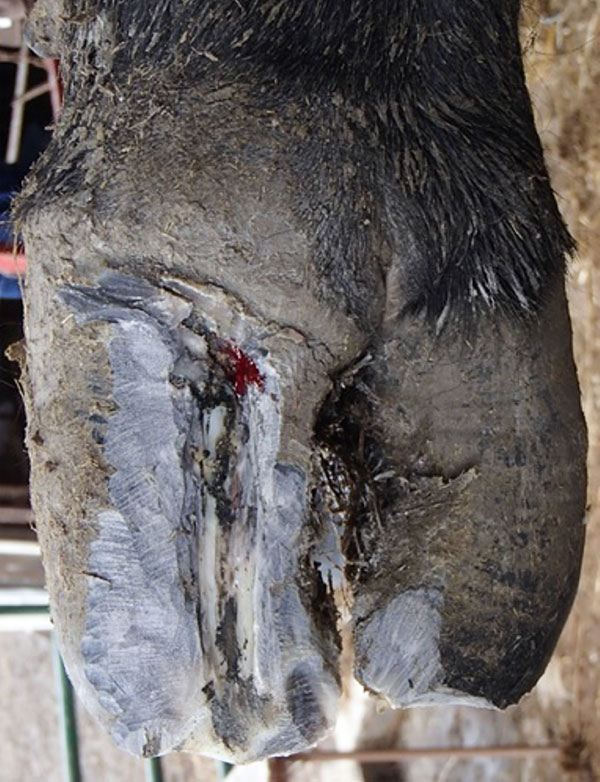Prevent Hoof Cracks
Trimming can sometimes prevent hoof cracks in beef cattle.
July 23, 2018

Genetics, environment, and mineral and vitamin deficiencies can all contribute to weak hoof structure.
Hoof wall cracks are fairly common in cattle and can be divided into two categories — vertical (sandcracks) and horizontal. If the crack goes clear through the horn, it causes pain and lameness.
Jan Shearer, professor and extension veterinarian at Iowa State University, says vertical cracks are more common in beef cattle than in dairy cattle, but horizontal cracks are common in all cattle.
“With vertical wall cracks, there seems to be a genetic predisposition. Some lines of cattle may suffer more cracks than others,” he says.
Environment also plays a role. If feet are continually wet, they get softer and are more easily damaged. In a dry climate they may be brittle and possibly more prone to cracking. Other factors include mineral and vitamin deficiencies, which may lead to weaker hoof structure.
“It’s been hard to narrow this down to specific vitamins and minerals, but these are factors commonly considered to play a role in vertical cracks,” he says.
Most vertical cracks occur in the outer claw of front feet. Fortunately, vertical wall cracks rarely cause lameness. When they do, they can be difficult and stubborn conditions to fix, he says.
“Horizontal wall cracks tend to occur in association with calving. They usually are not a problem unless they are deep. In that situation the segment closer to the toe may get loose and cause pinching/pressure on the corium (the “quick”). In some cases we have to remove that portion or try to stabilize it until it grows out. Lameness is due to instability of that segment, moving and pinching the corium underneath,” he says.
The hoof wall grows approximately ¼ inch per month.
“You can estimate when calving occurred by looking at that ring/line around the hoof and measuring down from the coronary band. The location of horizontal wall cracks can also help you estimate approximately when those will grow out,” explains Shearer.
When dealing with both vertical or horizontal wall cracks, trimming can be helpful as preventative maintenance. Many producers trim bulls’ feet, but cows may need trimming too, especially if they are always in soft green pasture, which reduces hoof wear. By contrast, feet self-trim when cattle are walking on rocks and dry ground.
“The size of the hoof is a combination of growth and wear. If the wear is less than the growth, soon you have a very long foot. This can vary, depending on the type of terrain, and how moist or dry it is,” says Shearer.
If the toes get too long, it puts more stress on the legs. When the toe is long, the sole at the toe is thicker compared to sole thickness toward the heel, he explains. The long toe puts more stress and strain on the flexor tendons. Hooves that are extremely long can create serious problems. It’s a good idea to monitor hoof length and trim feet if necessary.

Most vertical cracks occur in the outer claw of front feet. Fortunately, vertical wall cracks rarely cause lameness. When they do, they can be difficult and stubborn conditions to fix.
“As a rule of thumb, claws that are significantly more than 3 inches long (as measured on the dorsal ridge of the front wall) in adult cows or bulls would probably need trimming. This doesn’t mean that every cow with a hoof longer than 3 inches needs trimmed, but when a foot gets well beyond that length, evaluation by a foot-care professional may be in order. Some animals will need trimming on a regular basis — especially any cattle that are affected with screw claw,” says Shearer.
Editor’s Note: Heather Smith Thomas is a cattlewoman and freelance writer from Salmon, Idaho.
Angus Beef Bulletin EXTRA, Vol. 11, No. 7
Topics: Animal Handling , Health , Management
Publication: Angus Beef Bulletin


